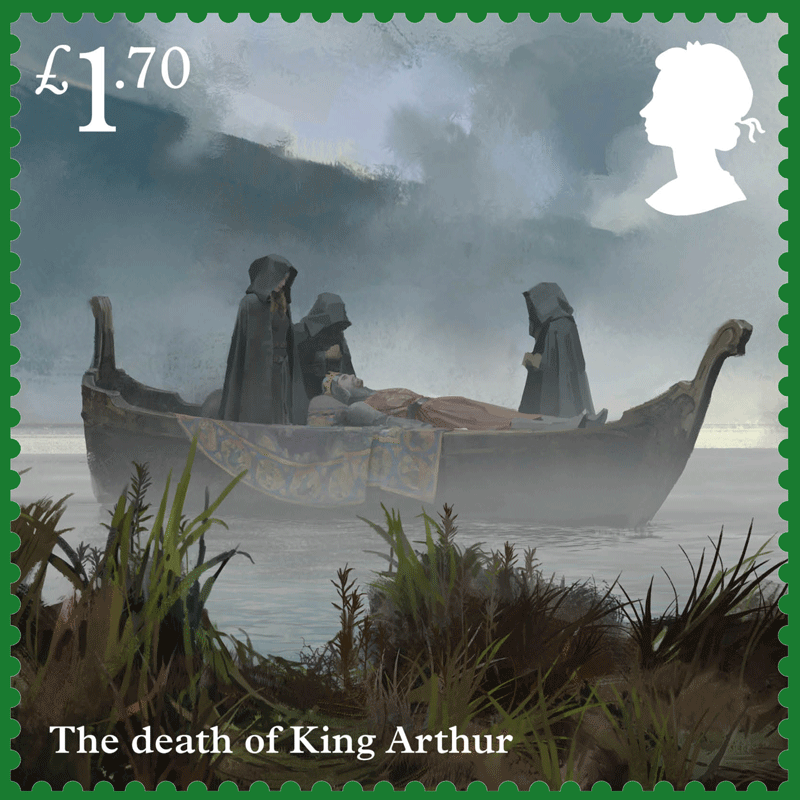[press release] [click on illustrations for larger versions]
Royal Mail Issues Special Stamps That Tell The Story Of The Legend Of King Arthur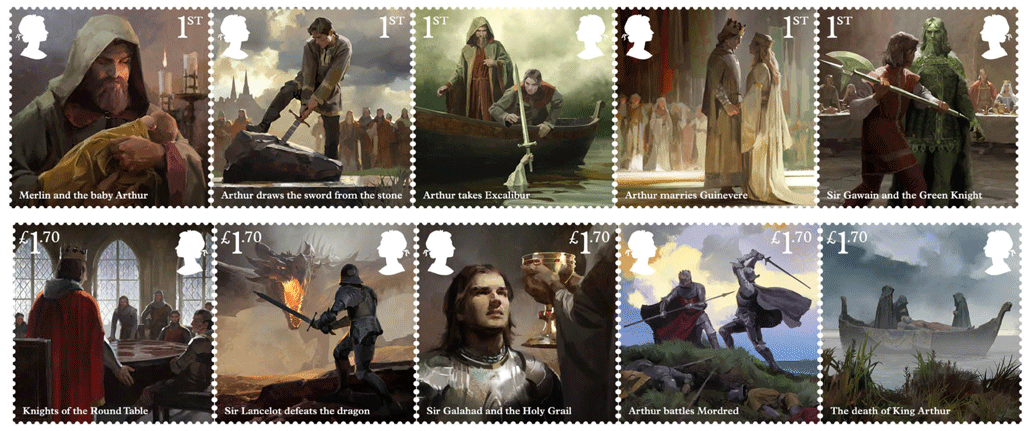
- 10 stamps depict key moments in the legend of King Arthur and his knights, stories which have been re-imagined countless times
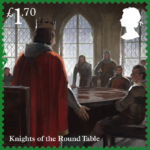 Stories of King Arthur have captivated people for a millennium and a half, with its sword in the stone, knights of the round table, quest for the Holy Grail and the wizard Merlin
Stories of King Arthur have captivated people for a millennium and a half, with its sword in the stone, knights of the round table, quest for the Holy Grail and the wizard Merlin- At least 50 films, and hundreds of novels, have been produced about the story
- Each of the images is an original illustration by concept artist, Jaime Jones
- They are available from 16 March at www.royalmail.com/kingarthur, by phone on 03457 641641 and 7,000 Post Offices across the UK
Royal Mail has revealed images of 10 stamps, issued 16 March, that tell the story of the Legend of King Arthur.
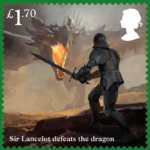 The images, all original illustrations by concept artist, Jaime Jones, depict key moments in the life of King Arthur – brought to life with Jones’ unique style, creativity and attention to detail.
The images, all original illustrations by concept artist, Jaime Jones, depict key moments in the life of King Arthur – brought to life with Jones’ unique style, creativity and attention to detail.
The Legend of King Arthur is one of the most enduring stories of all time. Though his tale is rooted in the fifth and sixth centuries, it has captivated people for a millennium and a half, with its sword in the stone, knights of the round table and the wizard Merlin. At least 50 films and hundreds of novels have been produced about the story, which over centuries has come to symbolise part of British identity.
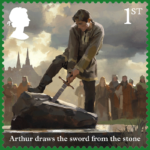 Even for those who have never read an account of King Arthur and the Knights of the Round Table, the legend is rich in meaning, often representing high ideals and a golden age. There are magical elements: the wizard Merlin, the mysterious Lady or Ladies of the Lake and the sword Excalibur.
Even for those who have never read an account of King Arthur and the Knights of the Round Table, the legend is rich in meaning, often representing high ideals and a golden age. There are magical elements: the wizard Merlin, the mysterious Lady or Ladies of the Lake and the sword Excalibur.
While many aspects of the legend are familiar – the doomed love between Guinevere and Lancelot, Arthur’s betrayal by Mordred, and the demise of the Round Table – what is less well known is that Arthur was neither a king nor English in the original legends. Nor were the characters, symbols or 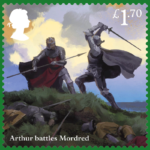 objects associated with the stories there from the start.
objects associated with the stories there from the start.
It is a reinvented Arthur, however, who has inspired many retellings. Arthur is everywhere in modern culture, providing a common point of reference for many of our experiences. The legends might claim that Arthur will come back again; it seems, however, that Arthur never left.
Philip Parker, Royal Mail, said: “These atmospheric illustrations bring to life the timeless stories of the King and the Knights of the Round Table. 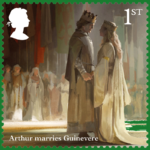 With its themes of magic, chivalry and quests, the enduring legend of King Arthur has entranced for centuries and will continue to do so.”
With its themes of magic, chivalry and quests, the enduring legend of King Arthur has entranced for centuries and will continue to do so.”
The stamps will be on sale from 16 March 2021. The full set of 10 stamps, available in a Presentation Pack, retails at £13.65 and will be available at www.royalmail.com/kingarthur, by phone on 03457 641 641 and in 7,000 Post Offices across the UK.
Stamp by Stamp:
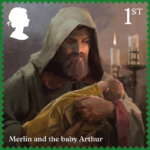 Merlin holds baby Arthur, the future king, whose origins remain shrouded in mystery, and in Merlin’s power, until Arthur is revealed to be Uther Pendragon’s rightful son and heir.
Merlin holds baby Arthur, the future king, whose origins remain shrouded in mystery, and in Merlin’s power, until Arthur is revealed to be Uther Pendragon’s rightful son and heir.
Arthur’s birthright to the crown of England, according to later romance traditions, is confirmed when he pulls out the sword in view of the Archbishop of Canterbury and the whole court.
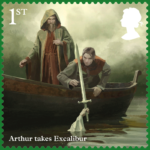 Arthur’s famed sword, Excalibur, is the gift of the Lady of the Lake, and a symbol of his tutelage by Merlin and his mission in the world. Destined for greatness, Arthur excels in all human virtues.
Arthur’s famed sword, Excalibur, is the gift of the Lady of the Lake, and a symbol of his tutelage by Merlin and his mission in the world. Destined for greatness, Arthur excels in all human virtues.
Despite Merlin’s warnings, Arthur chooses Guinevere as his wife. Her dowry, Thomas Malory tells us, is the Round Table, which Arthur will use to builda fellowship of knights united around the values of loyalty and equality.
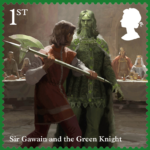 Arthur’s nephew and chief counsellor, Sir Gawain, here swings his axe to chop off the head of the Green Knight, whose deadly Christmas game of blows startles Arthur’s court and challenges its values.
Arthur’s nephew and chief counsellor, Sir Gawain, here swings his axe to chop off the head of the Green Knight, whose deadly Christmas game of blows startles Arthur’s court and challenges its values.
Around the Round Table, knights from Europe and all nations in the British Isles share the same values of loyalty and unite as equals to protect the weak and defend the realm.
Emblematic since Arthur Rackham’s illustrations dating from the early 20th century, Lancelot’s slaying of the dragon shows God’s grace granted to Lancelot in the fight with the Devil/darkness, despite Lancelot’s own sins.
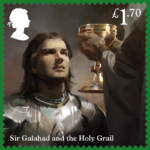 Sir Galahad, the pure knight, is the epitome of perfection among Round Table knights, and the opposite of his father, Lancelot. His unique success
Sir Galahad, the pure knight, is the epitome of perfection among Round Table knights, and the opposite of his father, Lancelot. His unique success
in the Grail Quest reveals the moral failures of Arthurian chivalry.
Arthur and Mordred meet one last time in battle, fulfilling their destiny: Arthur’s, to be mortally wounded by his own son, and Mordred’s, to commit the sin of patricide and treason.
The wounded Arthur departs for Avalon on a barge driven by three queens. This represents hope for the king’s return, and the agency of women in healing and in preserving his memory and stories.